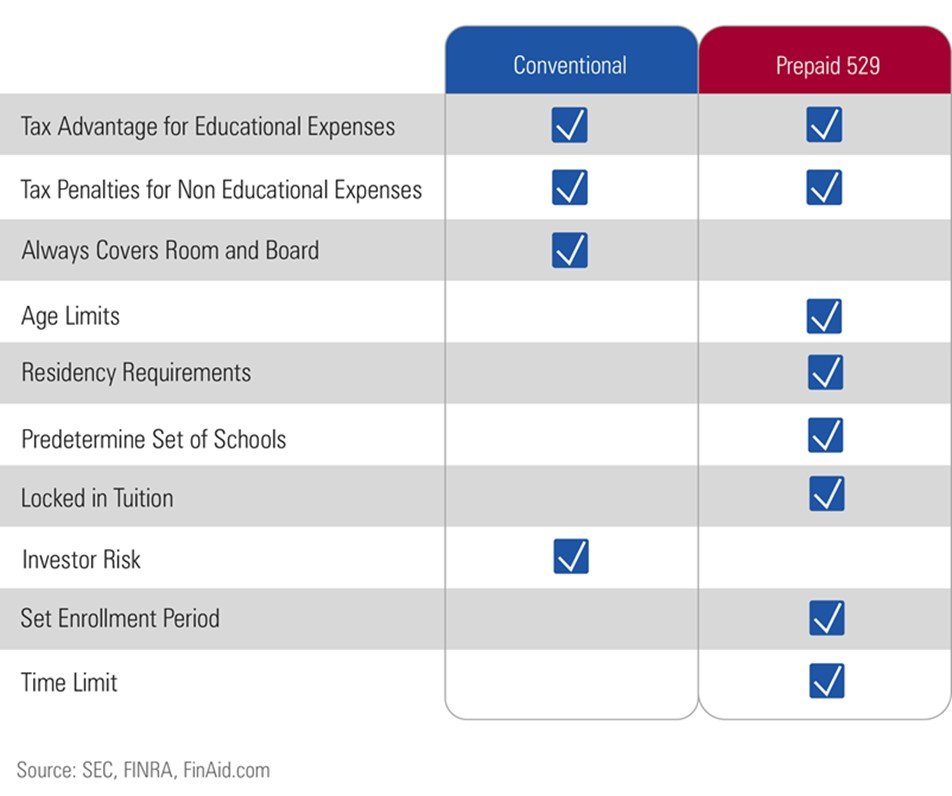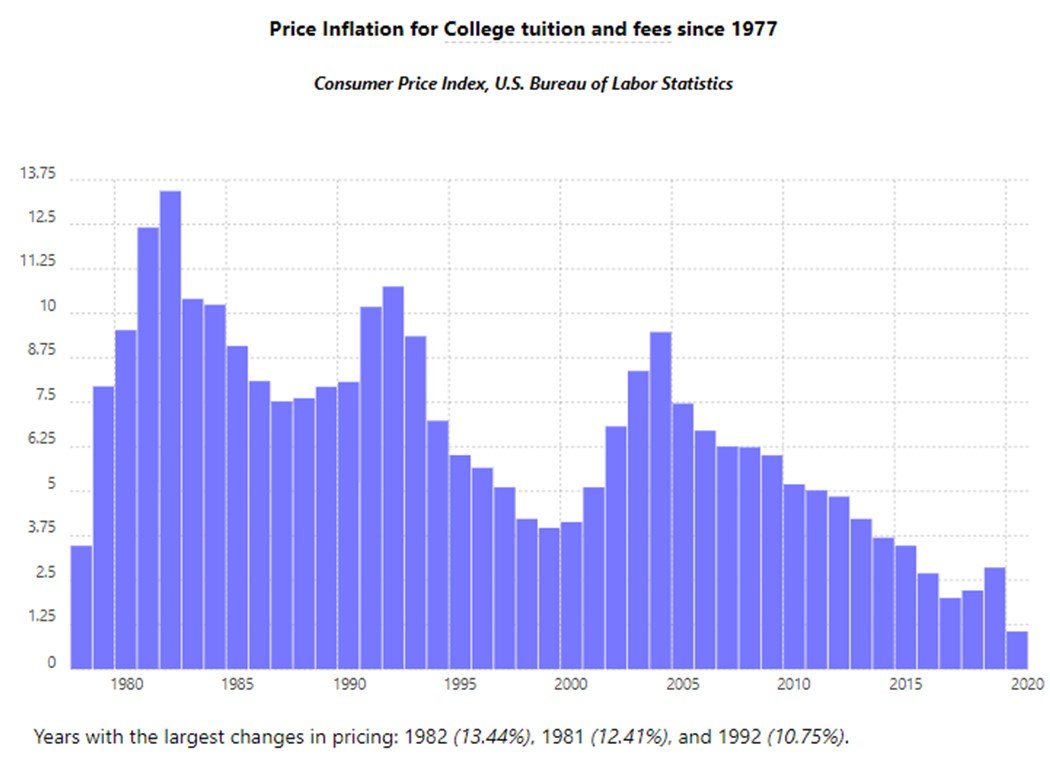For Parents of Multiples A Prepaid 529 Plan May Not Be as Good as Advertised
Most parents may not realize that you have multiple college saving options (including more than one type of 529 plan) available to you and your family when it comes to saving for college. But whether you are the parents of multiples (twins, trips, quads, etc.) or have multiple kids, how do you determine what the best college savings plan option is best for you?
A Prepaid 529 Plan May Not Sound as Good as Advertised
At first glance, it appears as though a prepaid 529 plan could be the best option given that they provide assurances that your investment will keep up with the rate of college tuition inflation while mitigating the market risk. However, you are a few crucial facts that you need to know:
- You're not locking in today's cost; you are locking in an inflated future cost.
- Because state prepaid plans can only be fully redeemed at state public universities, the program will typically only cover the weighted average of in-state tuition if a student attends a private or out-of-state institution.
- Most prepaid 529 plans only cover tuition and mandatory fees and not other costs, like room and board.
- Prepaid plans have age limitations.
- Other stipulations can include residency requirements and holding periods to use the benefits.
The chart compares a conventional 529 with a prepaid 529 plan. There are currently eight states that offer a prepaid 529 option, which are:

- Florida: Florida Prepaid College Plan
- Maryland: Maryland Prepaid College Trust
- Michigan: Michigan Education Trust
- Mississippi: Mississippi Prepaid Affordable College Savings Program
- Nevada: Nevada Prepaid Tuition Program
- Pennsylvania: PA 529 Guaranteed Savings Plan
- Texas: Texas Tuition Promise Fund
- Washington: Guaranteed Education TuitionProgram
There is also a Private College 529 Plan that allows families to lock in tuition at nearly 300 participating private universities and colleges. It is the only prepaid 529 that can lock in tuition at private universities. The plan is sponsored by the Tuition Plan Consortium LLC, which is composed of participating schools. The Tuition Plan Consortium guarantees the locked-in tuition price, meaning a participating school is obligated to accept purchased plan certificates even if that school later leaves the program. Beneficiaries have up to 30 years to use the plan's benefits.
If you consider investing in a prepaid 529 plan, consider utilizing a checklist that I developed to help you analyze the plan. There are several crucial elements, both financially and personally, that would factor in making your decision to invest in a prepaid 529 plan.
If you decide that a prepaid 529 plan is best for you, you are betting that…
- Tuition costs will increase more than you expect the returns on your assets to be,
- Your child will go to an in-state public school, and
- You will be able to continually and consistently pay the monthly, quarterly, or annual plan contribution amount.
While locking in the cost of tuition sounds appealing, let's look at the trend in the cost of college in the chart below.

Notice a trend over the past 15 years? While the absolute cost of college has increased, the rate of the increase has been slowing. Some schools are even seeing a decline in the cost of tuition. As U.S. birth rates continue to decline, this means a shrinking pool of applicants for colleges. Sooner or later, the laws of supply and demand should kick in, thus bring down the cost of tuition.
How Do the Other College Saving Plan Options Stack Up?
Next, let's address the Coverdell Education Savings, UGMA/UTMA, and Roth IRA options as a group. The upside of these three options all pales in comparison to the benefits of a conventional 529 plan. However, there are significant drawbacks to these three options, which are as follows;
- Coverdell Education Savings - Income limitations may not allow you to contribute, there is no state income deduction, an annual contribution of $2,000 is low, compared to what you can contribute to a 529 or Roth IRA, you can only contribute until the child reaches 18, and the account must be fully withdrawn by child's 30th birthday.
- UGMA/UTMA - There is no state income deduction, accounts are considered assets of the child, which means a negative impact on financial aid eligibility, and the assets belong to the child at age 18 or 21, depending on state law and can be used however the child chooses
- Roth IRA - Must have earned income, income limitations that may not allow you to contribute, there is no state income deduction, and the annual contribution is low compared to what you can contribute to a 529. Roth withdrawals count as income for financial aid purposes and can affect how much aid will be offered
Why I believe the Conventional 529 Plan is the Best Option for Most Families
When it comes down to it, here are the reasons why I believe that a conventional 529 plan is the best option for most families to save for college:
- Flexible contribution options - you are not locked into set contribution amounts.
- Ability to choose any school - you are not locked into in-state schools.
- No time or age limitations - you can allow your assets to grow indefinitely with no time table, use the assets when you need them.
- Can be used for all qualified education expenses - prepaid 529 plans cover tuition and mandatory fees only.
- Ease of others to contribute - a significant benefit which I will explain below.
- Depending upon investment returns - allows you to outpace college inflation.
For an in-depth summary of all five college saving plan options, I created a side by side comparison here.
Parents often ask me what the impact on financial aid would be in utilizing a conventional 529 plan. Unfortunately, most parents believe that it will negatively impact them, which is wrong.
If the parent is the account owner, accounts are treated as assets of the parent, which has a smaller impact on federal financial aid than if the assets were those of the child. The current federal financial aid formula considers no more than 5.6 percent of parents' assets and 20 percent of a child's assets available to pay for college.
Individual institutions may consider parents' assets differently when deciding how to distribute financial aid. Be sure to consult the college or university financial aid office and your wealth advisor about your situation.
Practically, any type of saving for college could impact your federal financial aid; it should not deter you from deciding to save and invest. Another point that parents of multiples or multiple children should consider is that the more kids you have in college at one time, the lower your Expected Family Contribution (EFC). The more kids you have in college at any point in time is one of the most significant impacts on your federal financial aid.
If you have questions about college planning or any wealth planning topic, including portfolio management and tax planning, contact me to discuss how I may be able to help you prepare for college and other financial and lifestyle goals.

